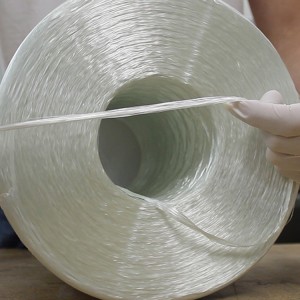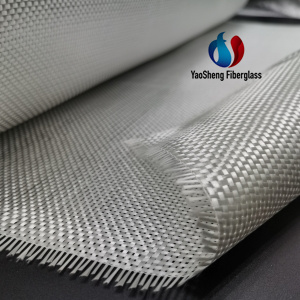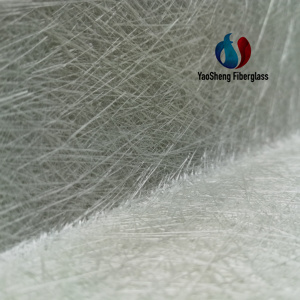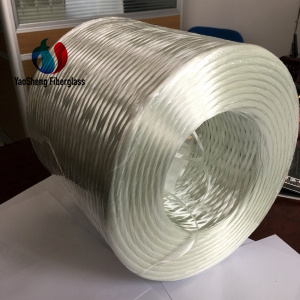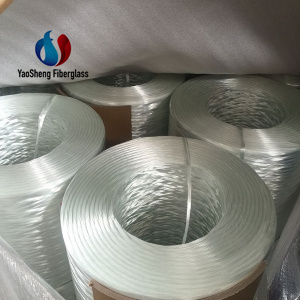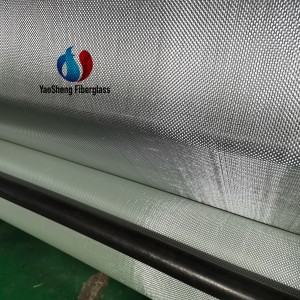The raw materials of composite materials include resin, fiber and core material, etc. There are many choices, and each material has its unique strength, stiffness, toughness and thermal stability, and its cost and output are also different.
However, the composite material as a whole, its final performance is not only related to the resin matrix and fibers (and the core material in the sandwich structure), but also closely related to the design method and manufacturing process of the materials in the structure.
This article will introduce the commonly used composite manufacturing methods, the main influencing factors of each method and how to choose raw materials for different processes.
Method description: A molding process in which the chopped fiber reinforced material and the resin system are sprayed into the mold at the same time, and then cured under normal pressure to form a thermosetting composite product.
material selection:
Resin: mainly polyester
Fiber: coarse glass fiber yarn
Core material: None, needs to be combined with laminates separately
The main advantage:
1) The craftsmanship has a long history
2) Low cost, fast fiber and resin laying
3) Low mold cost
Main disadvantages:
1) The laminated board is easy to form a resin enriched area, and the weight is relatively high
2) Only chopped fibers can be used, which severely limits the mechanical properties of laminates
3) In order to facilitate spraying, the resin viscosity needs to be low enough to lose the mechanical and thermal properties of the composite material
4) High styrene content in spray resin means higher potential hazards to operators, and low viscosity means that the resin is easy to penetrate the work clothes of employees and directly contact the skin
5) The concentration of styrene volatilized in the air is difficult to meet the legal requirements
typical application:
Simple fencing, low load structural panels such as convertible car bodies, truck fairings, bathtubs and small boats
Description of the method: Manually impregnate the fibers with resin. The fibers can be reinforced by weaving, braiding, sewing or bonding. Hand lay-up is usually done with rollers or brushes, and then the resin is squeezed with a rubber roller to penetrate the fibers. The laminates were cured under normal pressure.
material selection:
Resin: no requirement, epoxy, polyester, polyvinyl ester, phenolic resin are acceptable
Fiber: No requirement, but the aramid fiber with larger basis weight is difficult to infiltrate by hand lay-up
Core material: no requirement
The main advantage:
1) The craftsmanship has a long history
2) Easy to learn
3) If room temperature curing resin is used, the mold cost is low
4) Large selection of materials and suppliers
5) High fiber content, the fibers used are longer than spraying process
Main disadvantages:
1) Resin mixing, resin content and quality of laminates are closely related to the proficiency of operators, it is difficult to obtain laminates with low resin content and low porosity
2) The health and safety hazards of the resin. The lower the molecular weight of the hand lay-up resin, the greater the potential health threat. The lower the viscosity, the easier it is for the resin to penetrate into the work clothes of employees and directly contact the skin
3) If good ventilation equipment is not installed, the concentration of styrene volatilized from polyester and polyvinyl ester into the air is difficult to meet the legal requirements
4) The viscosity of the hand lay-up resin needs to be very low, so the content of styrene or other solvents must be high, thus losing the mechanical/thermal properties of the composite material
Typical applications: standard wind turbine blades, mass-produced boats, architectural models
Method description: The vacuum bag process is an extension of the above-mentioned hand lay-up process, that is, a layer of plastic film is sealed on the mold to vacuumize the hand-laid laminate, and an atmospheric pressure is applied to the laminate to achieve the effect of exhaust and compaction. To improve the quality of composite materials.
material selection:
Resin: mainly epoxy and phenolic resin, polyester and polyvinyl ester are not suitable because they contain styrene, which volatilizes into the vacuum pump
Fiber: No requirement, even fibers with a large basis weight can be wetted under pressure
Core material: no requirement
The main advantage:
1) Can achieve higher fiber content than standard hand lay-up process
2) The porosity is lower than the standard hand lay-up process
3) Under the condition of negative pressure, the full flow of the resin improves the degree of wetting of the fibers. Of course, part of the resin will be absorbed by the vacuum consumables
4) Health and Safety: The vacuum bag process can reduce the release of volatiles during curing
Main disadvantages:
1) Additional processes increase the cost of labor and disposable vacuum bag materials
2) Higher technical requirements for operators
3) The control of resin mixing and resin content largely depends on the proficiency of the operator
4) Although the vacuum bag reduces the release of volatiles, the health threat to the operator is still higher than that of the infusion or prepreg process
Typical applications: large-scale, one-time limited-edition yachts, racing car parts, bonding of core materials in shipbuilding
Deyang Yaosheng Composite Material Co., Ltd. is a professional company producing various glass fiber products. The company mainly produces Fiberglass roving, glass fiber chopped strand mat, glass fiber cloth/roving fabric/marine cloth, etc. Please feel free to contact us.
Tel: +86 15283895376
Whatsapp: +86 15283895376
Email: yaoshengfiberglass@gmail.com
Description of the method: The winding process is basically used to manufacture hollow, round or oval structural parts such as pipes and tanks. After the fiber bundle is impregnated with resin, it is wound on the mandrel in various directions, and the process is controlled by the winding machine and the mandrel speed.
material selection:
Resin: no requirement, such as epoxy, polyester, polyvinyl ester and phenolic resin, etc.
Fiber: no requirement, directly use the fiber bundle of the creel, no need to weave or sew into fiber cloth
Core material: no requirement, but the skin is usually a single-layer composite material
The main advantage:
1) The production speed is fast, and it is an economical and reasonable layering method
2) The resin content can be controlled by measuring the amount of resin carried by the fiber bundle passing through the resin tank
3) Minimize fiber cost, no intermediate weaving process
4) The structural performance is excellent, because the linear fiber bundles can be laid in various load-bearing directions
The main disadvantages:
1) This process is limited to circular hollow structures
2) The fibers are not easy to be accurately arranged along the axial direction of the component
3) The cost of mandrel male mold for large structural parts is relatively high
4) The outer surface of the structure is not the mold surface, so the aesthetics are poor
5) When using low-viscosity resin, attention needs to be paid to the chemical performance and health and safety performance
Typical applications: chemical storage tanks and delivery pipes, cylinders, firefighter breathing tanks
Method description: The fiber bundle drawn from the creel is dipped and passed through the heating plate, and the resin is infiltrated into the fiber on the heating plate, and the resin content is controlled, and finally the material is cured into the required shape; this shape-fixed cured product is Mechanically cut to various lengths. Fibers can also enter the hot plate in directions other than 0 degrees.
Pultrusion is a continuous production process, and the cross-section of the product usually has a fixed shape, allowing slight changes. Fix the pre-wet material passing through the hot plate and spread it into the mold for immediate curing. Although this process has poor continuity, it can change the cross-sectional shape.
material selection:
Resin: usually epoxy, polyester, polyvinyl ester and phenolic resin, etc.
Fiber: no requirement
Core material: not commonly used
The main advantage:
1) The production speed is fast, and it is an economical and reasonable way to pre-wet and cure materials
2) Precise control of resin content
3) Minimize fiber cost, no intermediate weaving process
4) Excellent structural performance, because the fiber bundles are arranged in a straight line and the fiber volume fraction is high
5) The fiber infiltration area can be completely sealed to reduce the release of volatiles
Main disadvantages:
1) This process limits the cross-sectional shape
2) The cost of the heating plate is relatively high
Typical applications: Beams and trusses for house structures, bridges, ladders and fences
6. Resin Transfer Molding (RTM)
Method description: Lay dry fibers in the lower mold, apply pressure in advance to make the fibers fit the shape of the mold as much as possible, and bond them; then, fix the upper mold on the lower mold to form a cavity, and then inject the resin into the mold cavity.
Vacuum assisted resin injection and infiltration of fibers are usually used, namely vacuum assisted resin infusion process (VARI). Once fiber infiltration is complete, the resin introduction valve is closed and the composite is cured. Resin injection and curing can be done at room temperature or under heated conditions.
material selection:
Resin: usually epoxy, polyester, polyvinyl ester and phenolic resin, bismaleimide resin can be used at high temperature
Fiber: No requirement. Stitched fibers are more suitable for this process because the fiber bundle gaps facilitate resin transfer; there are specially developed fibers to facilitate resin flow
Core material: Honeycomb foam is not suitable, because the honeycomb cells will be filled with resin, and the pressure will cause the foam to collapse
The main advantage:
1) High fiber volume fraction and low porosity
2) Since the resin is completely sealed, it is healthy and safe, and the operating environment is clean and tidy
3) Reduce labor usage
4) The upper and lower sides of the structural part are mold surfaces, which is easy for subsequent surface treatment
The main disadvantages:
1) The mold used together is expensive, and in order to withstand greater pressure, it is heavy and relatively cumbersome
2) Limited to the manufacture of small parts
3) Non-wetted areas are prone to appear, resulting in a large amount of scrap
Typical applications: small and complex space shuttle and auto parts, train seats
7. Other perfusion processes – SCRIMP, RIFT, VARTM, etc.
Method Description: Lay the dry fibers in a similar manner to the RTM process, then lay the release cloth and the drainage net. After the layup is completed, it is completely sealed with a vacuum bag, and when the vacuum reaches a certain requirement, the resin is introduced into the entire layup structure. The distribution of resin in the laminate is achieved by guiding the resin flow through the guide net, and finally the dry fibers are completely infiltrated from top to bottom.
material selection:
Resin: usually epoxy, polyester, polyvinyl ester resin
Fiber: Any common fiber. Stitched fibers are better suited for this process as fiber bundle gaps speed up resin transfer
Core material: honeycomb foam not applicable
The main advantage:
1) Same as RTM process, but only one side is mold surface
2) One side of the mold is a vacuum bag, which greatly saves the cost of the mold and reduces the requirement for the mold to withstand pressure
3) Large structural parts can also have high fiber volume fraction and low porosity
4) The standard hand lay-up process mold can be used for this process after modification
5) The sandwich structure can be molded at one time
Main disadvantages:
1) For large structures, the process is relatively complicated, and repairs cannot be avoided
2) The viscosity of the resin must be very low, which also reduces the mechanical properties
3) Non-wetted areas are prone to appear, resulting in a large amount of scrap
Typical applications: Trial production of small boats, body panels for trains and trucks, wind turbine blades
8. Prepreg – autoclave process
Method description: The fiber or fiber cloth is pre-impregnated by the material manufacturer with a resin containing a catalyst, and the manufacturing method is a high temperature and high pressure method or a solvent dissolution method. The catalyst is latent at room temperature, giving the material a shelf life of weeks or months at room temperature; refrigeration can extend its shelf life.
The prepreg can be hand or machine laid onto the surface of the mold, then covered in a vacuum bag and heated to 120-180°C. After heating the resin can flow again and eventually cure. An autoclave can be used to apply additional pressure to the material, typically up to 5 atmospheres.
material selection:
Resin: usually epoxy, polyester, phenolic resin, high temperature resistant resin such as polyimide, cyanate ester and bismaleimide can also be used
Fiber: No requirement. Fiber bundle or fiber cloth can be used
Core material: no requirement, but the foam needs to be resistant to high temperature and high pressure
The main advantage:
1) The ratio of resin to curing agent and resin content are set accurately by the supplier, it is very easy to obtain laminates with high fiber content and low porosity
2) The material has excellent health and safety characteristics, and the working environment is clean, potentially saving automation and labor costs
3) The cost of unidirectional material fibers is minimized, and no intermediate process is required to weave fibers into cloth
4) The manufacturing process requires resin with high viscosity and good wettability, as well as optimized mechanical and thermal properties
5) The extension of working time at room temperature means that structural optimization and layup of complex shapes are also easy to achieve
6) Potential savings in automation and labor costs
Main disadvantages:
1) The cost of materials increases, but it is unavoidable in order to meet the application requirements
2) An autoclave is required to complete the curing, which has high cost, long operation time and size restrictions
3) The mold needs to withstand high process temperature, and the core material has the same requirements
4) For thicker parts, pre-vacuum is required when laying up prepregs to eliminate interlayer air bubbles
Typical applications: space shuttle structural parts (such as wings and tails), F1 racing cars
9. Prepreg – non-autoclave process
Method description: The low temperature curing prepreg manufacturing process is exactly the same as the autoclave prepreg, the difference is that the chemical properties of the resin allow it to be cured at 60-120°C.
For low-temperature 60°C curing, the working time of the material is only one week; for high-temperature catalysts (>80°C), the working time can reach several months. The fluidity of the resin system allows curing using only vacuum bags, avoiding the use of autoclaves.
material selection:
Resin: Usually only epoxy resin
Fiber: no requirement, same as traditional prepreg
Core material: no requirement, but special attention should be paid when using standard PVC foam
The main advantage:
1) It has all the advantages of traditional autoclave prepreg ((i.))-((vi.))
2) The mold material is cheap, such as wood, because the curing temperature is low
3) The manufacturing process of large structural parts is simplified, only need to pressurize the vacuum bag, circulate the hot air of the oven or the hot air heating system of the mold itself to meet the curing requirements
4) Common foam materials can also be used, and the process is more mature
5) Compared with the autoclave, the energy consumption is lower
6) Advanced technology ensures good dimensional accuracy and repeatability
Main disadvantages:
1) Material cost is still higher than dry fiber, although resin cost is lower than aerospace prepreg
2) The mold needs to withstand a higher temperature than the infusion process (80-140°C)
Typical applications: high-performance wind turbine blades, large racing boats and yachts, rescue aircraft, train components
10. Non-autoclave process of semi-preg SPRINT/beam prepreg SparPreg
Method description: It is difficult to discharge the air bubbles between layers or overlapping layers during the curing process when using prepreg in thicker structures (>3mm). In order to overcome this difficulty, pre-vacuumization was introduced into the layering process, but Significantly increased process time.
In recent years, Gurit has introduced a series of improved prepreg products with patented technology, enabling the manufacture of high quality (low porosity) thicker laminates to be completed in a single step process. The semi-preg SPRINT is composed of two layers of dry fiber sandwiching a layer of resin film sandwich structure. After the material is laid into the mold, the vacuum pump can completely drain the air in it before the resin heats up and softens and soaks the fiber. solidified.
Beam prepreg SparPreg is an improved prepreg that, when cured under vacuum, can easily remove air bubbles from the bonded two-ply material.
material selection:
Resin: mostly epoxy resin, other resins are also available
Fiber: no requirement
Core material: most, but special attention should be paid to high temperature when using standard PVC foam
The main advantage:
1) For thicker parts (100mm), high fiber volume fraction and low porosity can still be accurately obtained
2) The initial state of the resin system is solid, and the performance is excellent after high temperature curing
3) Allow the use of low-cost high-basis-weight fiber cloth (such as 1600 g/m2), increase the lay-up speed, and save manufacturing costs
4) The process is very advanced, the operation is simple and the resin content is precisely controlled
Main disadvantages:
1) Material cost is still higher than dry fiber, although resin cost is lower than aerospace prepreg
2) The mold needs to withstand a higher temperature than the infusion process (80-140°C)
Typical applications: high-performance wind turbine blades, large racing boats and yachts, rescue aircraft
Post time: Dec-13-2022


